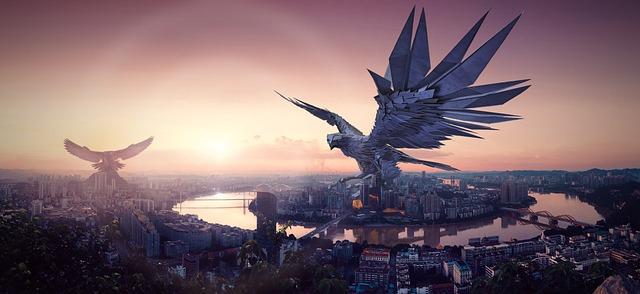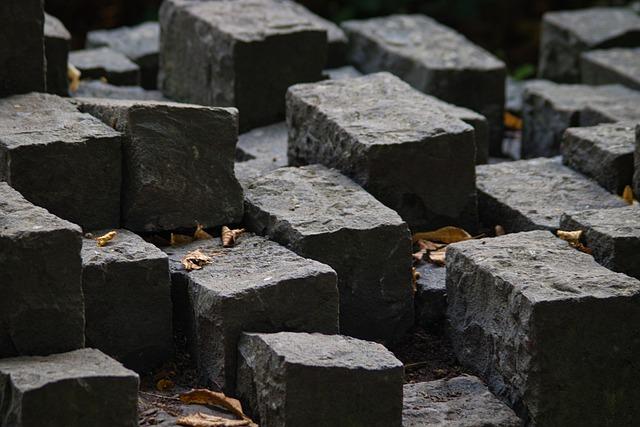In the dimly lit corridors of imagination, where the boundaries of reality blur and the extraordinary comes to life, art directors wield their creative prowess to construct the awe-inspiring worlds of sci-fi cinema. These architects of the unknown transform mere concepts into tangible realms, crafting environments that transport audiences to galaxies far beyond our own. “” delves into the meticulous artistry and visionary processes behind these cinematic masterpieces. Journey with us as we explore the seamless blend of innovation and craftsmanship that brings the fantastical to life, one meticulously designed set at a time.
Crafting the Cosmos: The Art of World-Building in Sci-Fi Cinema
In the realm of sci-fi cinema, the art director’s role is nothing short of alchemy. These visionaries transform abstract ideas into tangible realities, crafting environments that transport audiences to galaxies far beyond our own. At the heart of this process is the delicate balance between imagination and practicality. Art directors meticulously plan every detail, from the towering cityscapes of a dystopian future to the intricate interior of a starship, ensuring each element serves the story and ignites the viewer’s imagination.
To achieve this, art directors employ a variety of techniques and tools:
- Concept Art: Initial sketches and paintings that visualize the film’s aesthetic and tone.
- 3D Modeling: Using software to create detailed digital landscapes and structures.
- Practical Sets: Building physical environments to enhance authenticity and actor interaction.
- Mixed Media: Combining CGI with real-world elements to create seamless visual experiences.
These creative architects work closely with directors and production teams, ensuring every set piece not only dazzles visually but also enriches the narrative, making each film a unique voyage through the cosmos.

Materials of the Future: Selecting and Sourcing the Perfect Props
In the realm of sci-fi filmmaking, the choice of materials for props is crucial in crafting a believable universe. Art directors often look beyond traditional resources, seeking innovative materials that reflect the futuristic themes of their narratives. Carbon fiber, smart textiles, and bioplastics are some of the cutting-edge options that are reshaping prop design. These materials offer not only durability and lightweight properties but also a sleek, modern aesthetic that aligns perfectly with the sci-fi genre.
- Carbon Fiber: Known for its strength and lightweight nature, ideal for creating advanced weaponry and sleek armor.
- Smart Textiles: Fabrics embedded with technology, perfect for costumes that require dynamic, interactive elements.
- Bioplastics: Eco-friendly and versatile, used for creating organic-looking structures or alien artifacts.
To source these materials, art directors often collaborate with cutting-edge tech companies and sustainable suppliers, ensuring their vision aligns with both innovation and environmental consciousness. This synergy between material science and creative design is what brings the fantastical elements of sci-fi worlds to life, making them feel both tangible and forward-thinking.
Balancing Reality and Imagination: Techniques for Authentic Set Design
Creating a set that resonates with both the fantastical and the believable is an art form in itself. Art directors employ a variety of techniques to achieve this delicate balance, ensuring that audiences are both captivated by the imaginary and grounded in reality. One essential method is the use of real-world textures and materials. By incorporating elements like rusted metal, weathered wood, or cracked concrete, designers anchor the set in a tangible world, providing a tactile familiarity that viewers subconsciously recognize.
Another effective approach is integrating practical effects with digital enhancements. This technique ensures that the set feels alive and responsive. For instance, practical lighting can cast real shadows and reflections, which are then enhanced through CGI to create a seamless blend of the authentic and the imaginary. Key techniques include:
- Layering Details: Adding layers of detail, such as graffiti or everyday objects, can provide depth and context.
- Color Psychology: Utilizing colors strategically to evoke specific emotions or suggest futuristic technology.
- Spatial Design: Crafting spaces that reflect character dynamics and plot developments.
These techniques allow art directors to construct environments that are not only visually stunning but also deeply immersive, bridging the gap between reality and imagination.

Collaborative Vision: Working with Directors and Visual Effects Teams
Creating immersive worlds in sci-fi films requires a harmonious blend of creativity and technology, where art directors work closely with directors and visual effects teams. This collaboration is pivotal to transforming conceptual sketches into tangible realities. Art directors craft the initial vision, setting the tone and style of the universe, while directors ensure that this vision aligns with the narrative’s emotional and thematic needs.
The partnership with visual effects teams is equally crucial, as they bring the impossible to life. Key aspects of this collaboration include:
- Conceptual Alignment: Ensuring that all creative teams share a unified vision, preventing discrepancies between physical sets and digital enhancements.
- Technical Integration: Seamlessly merging practical effects with CGI, enhancing believability and immersion.
- Iterative Feedback: Continuous dialogue between teams, allowing for adjustments and improvements throughout production.
Such synergy results in visually stunning and emotionally resonant sci-fi worlds that captivate audiences and push the boundaries of storytelling.

